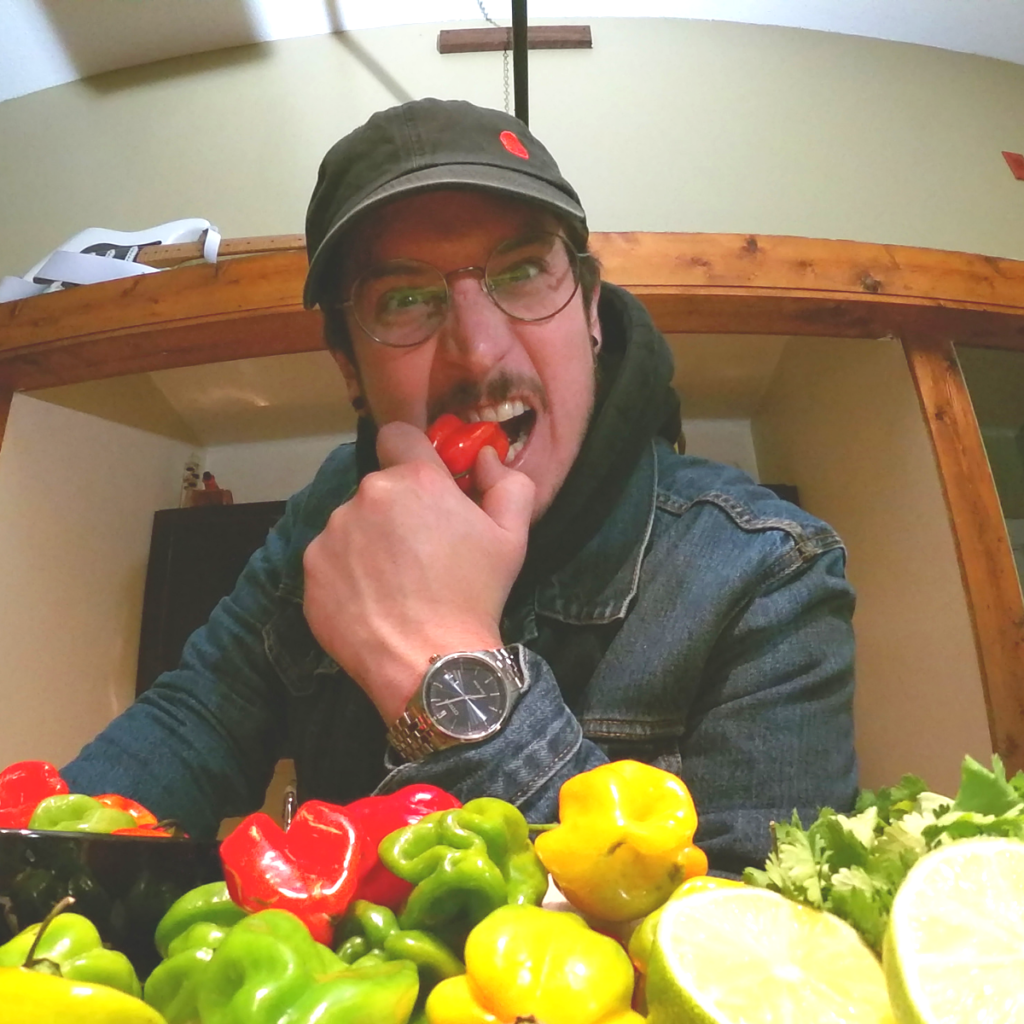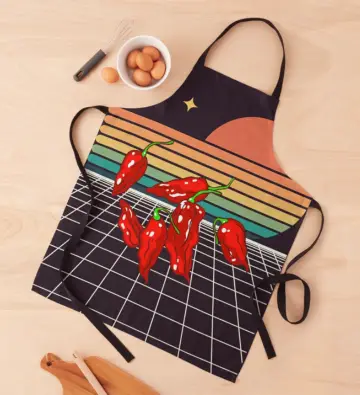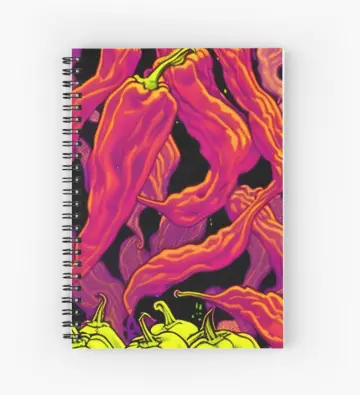Don’t worry if you’re wondering how to germinate hot pepper plant seeds! We’ve put together some information below to help you get started.
Germination is the process by which a seed sprouts and breaks the surface of soil or compost in preparation for rooting. Successful germination of your seeds will lead to a strong healthy pepper plant if well taken care of.
Different seeds take different amounts of time to germinate. Some seeds need to be kept dry and cool. Others need warm soil, a greenhouse, or even a hot compost pile.
Here is how you germinate your hot pepper seeds.
This post contains affiliate links to products. I may receive a commission for purchases made through these links.
-Thanks!
When to Start Germinating Hot Pepper Seeds.
I usually start mine sometime in February. This gives them plenty of time to grow before I gradually move them outside for some sun.
If you are going to be growing indoors then you can germinate your seeds whenever you are ready.
A good rule is to germinate your seeds 6-8 weeks before you plan to move them outside. For super-hot varieties of peppers, you should increase that guideline to about 8-10 weeks. This should give your seeds plenty of time to germinate.
Depending on the seed, to germinate pepper seeds could take a week or as long as two weeks some super-hots may even take months. The main factor that affects germination time is temperature. Warm soil tends to speed up germination time.
I usually use a heating pad for starting seeds to keep my seed pods warm. Sometimes in a pinch, I’ll rest them over top of one of my radiators. If I use the radiator, I’ll periodically check to make sure they aren’t too hot.
How to Germinate Hot Pepper Seedlings.
The first step in growing hot peppers is to germinate your seeds. This involves inspecting, softening, and sprouting the seeds.
Inspecting The Seeds
This part is super easy. First, open the seed package and look at all of the seeds carefully. You want to look for any discolored seeds or misshapen seeds. There is likely something wrong with these seeds and they may not sprout.
Set aside the ugly seeds and move on to the next step with your good seeds.
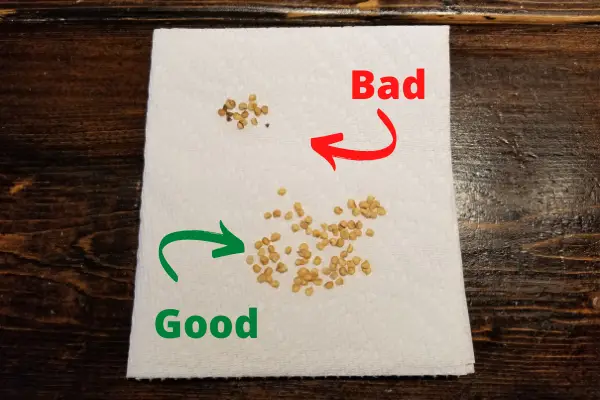
Softening The Seeds
Seed shells can sometimes be difficult for the root to sprout through. You can make it easier for the root by soaking the seed before germination.
Soaking the seed will soften the shell, I usually do this by putting my seeds in a shot glass with warm water and setting the glass somewhere warm.
Some people say that using Chamomile tea to soak the pepper seeds will help kill any bacteria on the seed.
Most of the time I leave the hot pepper seeds in the water for about a day or so. I’ve used this method to grow plants from dried pepper pod seeds. A good rule I use is to wait for the seeds to sink to the bottom of the glass. This is a good sign that they are softened and ready to move on to the paper towel.
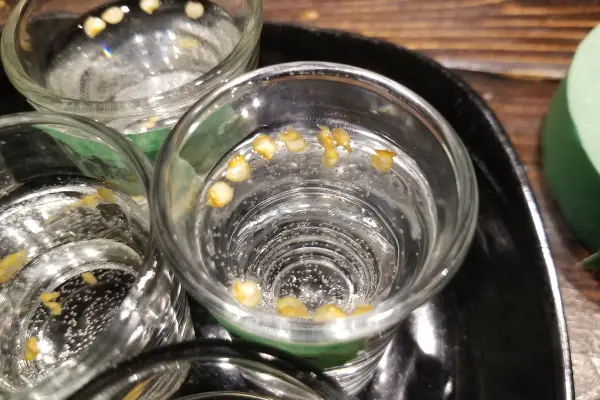
Sprouting The Seeds
After soaking your seeds, it’s time to get started with sprouting. This is when the root finally breaks through the shell of the seed.
There are a few ways to do this but we’ll go our favourite below.
- Soak your seeds
- Fold a paper towl into a short half
- Dampen the paper towel with a spray bottle
- Place hot pepper seeds on one side of the towel
- Fold the paper towel over to cover the seeds
- Place the folded paper towel in the germination environment
- Check your seeds for germination
- Plant the germinated pepper seeds in your seedling pods
Germination Environments For Hot Peppers
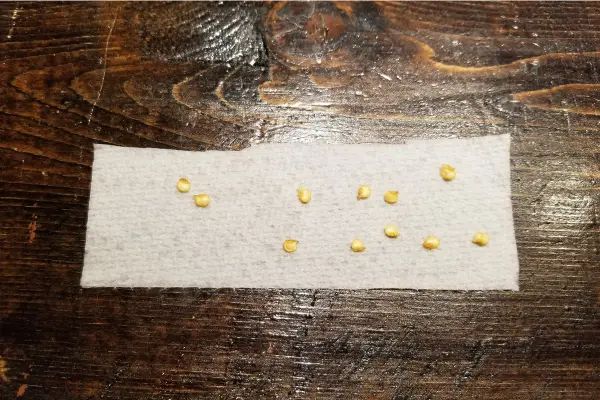
Your germination environment can be anything really as long as it is dark and damp. You can place the paper towel in a Ziploc bag and seal it halfway. This should allow some breathing room and also allow the paper towel to stay damp. Put the Ziploc bag somewhere warm and cover with a towel.
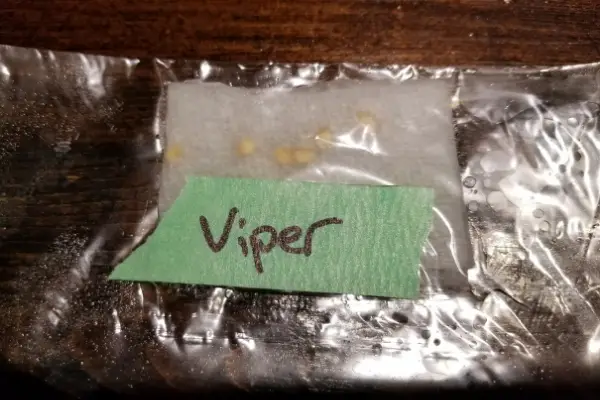
A small cup with a lid will also work for germinating hot pepper seeds. Place a bit of paper towel at the bottom of the cup and dampen the towel. Then set your seeds on top of the paper towel. Close the lid and leave a bit of room for air to escape. Place the cup on a heat mat and check periodically for sprouting.
Another method is to use a plate and a bowl. You follow the same steps with the paper towel above. Once the paper towel is folded over the seeds you place it on the plate. Now cover the plate with the bowl and put the plate somewhere warm.
Your seeds will germinate quickly when they are around 25 to 30 degrees Celcius or 80 to 90 degrees Fahrenheit.
Germination time will vary depending on the growing conditions and the variety of pepper you are planting.
Germinating Hot Pepper Seeds In Soil
You can also germinate hot pepper seeds directly in a seed starting mix. To do this you will need the following
- Seed starting soild
- Water
- Seed cells
- Mixing bucket
In the mixing bucket, add your seed starting soil and mix with water. The soil should be damp and will stick together, you don’t want it to be too wet but there should not be any dry spots.
Fill each of the seed cells with the soil mix and firmly press down to compress the soil. When you add water to the seed cell the soil will collapse if you don’t compact the soil well enough.
Once full with soil, place 1-4 pepper seeds in each cell and push the seeds into the soil using a pen or pencil. Cover the seeds with soil and give each cell a bit of water.
Seed Sprouting Supplies
- Seed starting soil
- Hot pepper seeds
- Seedling starting trays and domes
- Stakes or labels for each pod
- Seedling heating pad
- Paper towel
- Water
- Germination environment
Planting The Seeds
Step One. Fill your containers with soil and label each with a pencil or stick.
Step Two. Make a hole for each sprouted pepper seed. You can use the eraser end of a pencil or your pinky finger to make the hole. The hole should be about a quarter of an inch deep, about half of your fingernail.
Step Three. Cover the seeds with a thin layer of soil. This will help retain moisture and prevent them from being exposed to too much light, which can kill them. Place the plastic cover over the top of your containers and create some holes in it for ventilation. Place your containers in a warm place. If needed, you can use a heating mat underneath your containers to speed up germination time.
Step Four. Water and keep the soil moist, but never too wet. The soil should be damp, not soggy. Pepper seeds will rot if you overwater them.
Step Five. Your seed should sprout through the top of the soil and over a few days will move onto its seedling phase.
The First Few Weeks As Seedlings
Pepper seeds do not need to be watered every day, but you should ensure that the soil is moist. Watering is usually done from the bottom of the pot or from underneath. Keep checking your seedlings daily for signs of germination and water when required.
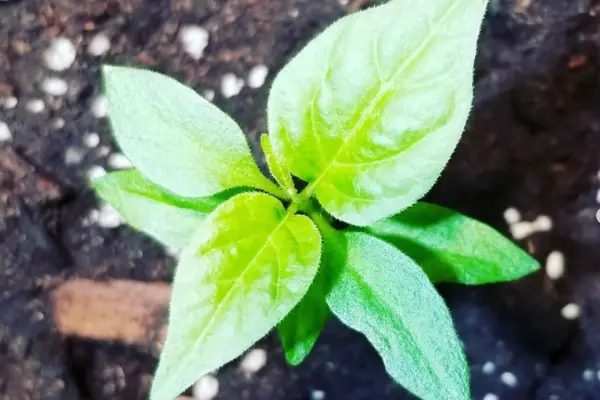
You will usually notice a green sprout a few days or weeks after planting your pepper seeds. Keep the hot pepper in the starter pod until the seedling is about as tall as the pod is.
If you have clear starter pods you can see the roots begin to wrap around the inside of the pod. This is a sign that the seedling is ready to be transplanted into a bigger pot.
Transplanting Seedlings To A Bigger Container
Pepper seedlings are more sensitive than mature pepper plants and are more susceptible to cold temperatures, high winds, and sturdy handling. During the first week of growing in containers, it is recommended that you keep the soil moist but not wet.
You should handle the hot pepper seedlings very delicately, especially if they are still very young.
When it comes time to transplant the seedlings to a bigger container you need to be careful not to disturb the roots or damage the plant.
With the stem in between your index and middle finger, turn the seedling pod upside down. Once upside down and resting in your hand, give the seedling pod a tap to loosen the rootball and pull the seedling out of the pod carefully. Transplant the seedling to the new container and water the plant to welcome it to its new home.
When To Move Your Seedlings Outdoors
You’ll want to keep your peppers indoors for a while to let them grow big and strong. Usually, you don’t want to put them outside until the last frost date. I usually start mine in February and then move them outside in May.
Once the weather is hot enough, you can move the pots outside to let the plants get some sun. Keep an eye on the plants while they are out there, they may wilt and become flaccid as they are not used to the intense heat of the sun.
If this happens just bring them back inside and give them some water, they should pop back to life in no time.
After weathering your plants, the stems should be strong enough to withstand a full day outside. Once at this stage you can move the plants into their final homes. I keep mine in big Rubbermaid bins, this gives the roots plenty of room to move freely.
Mike P
Welcome to The Hot Sauce Guy! I’m Mike, your guide to the spicy world of hot sauces and the creator of Spicy Riffs Hot Sauce. From Canada, I share the hottest reviews, pepper-growing tips, and sauce recipes with a touch of rock and roll.
My passion? Crafting the perfect blend of heat and flavor. Whether you’re here for the fire or the flair, get ready for a journey into the world of spicy delights.
Let’s turn up the heat together!
About Us
